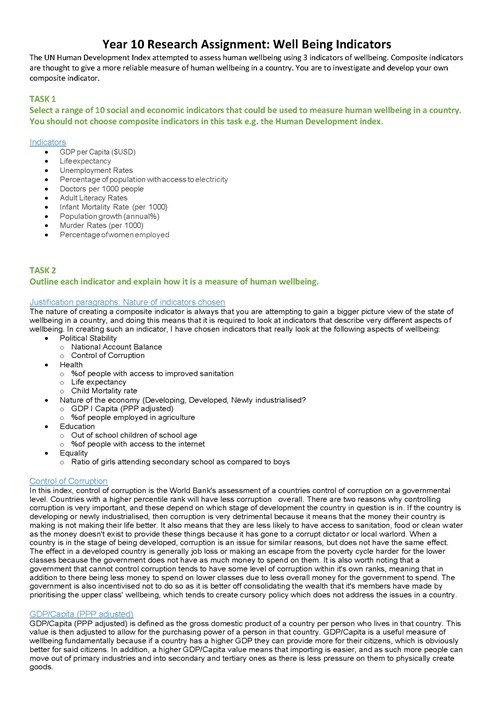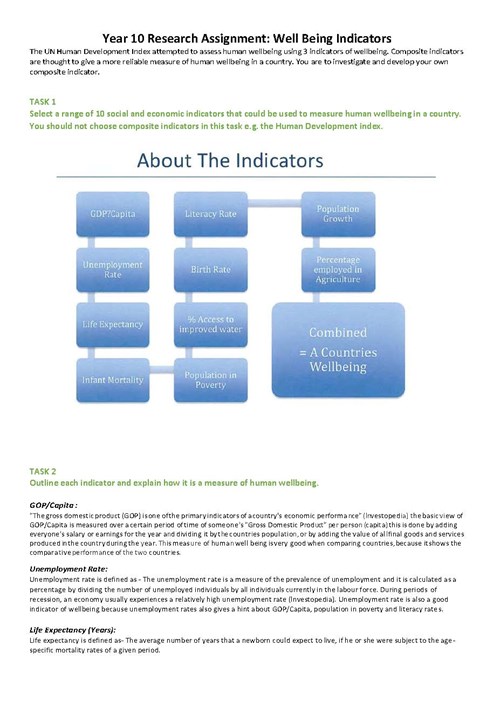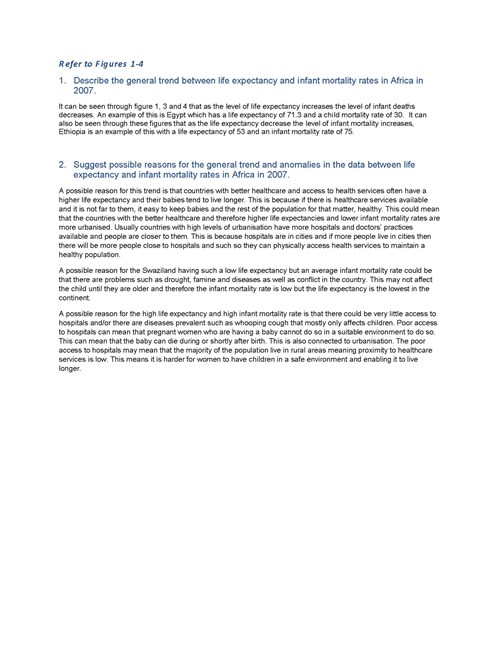- Home
- Resources
- Work samples
- Samples
- Research assignment: Wellbeing indicators - ABOVE
Geography
Year 10
Above satisfactory
Research assignment: Wellbeing indicators
Summary of task
Over a period of four weeks, students examined the concept of human wellbeing and factors affecting human wellbeing. Students discussed how effective quantitative and qualitative indicators are at assessing levels of wellbeing. They were then introduced to the idea that composite indicators (such as the UN Human Development Index) are thought to give a more reliable measure of human wellbeing in a country than other indexes. Given this background, students progressed through a staged inquiry over eight lessons to develop their own justified composite wellbeing index.
Specifically, students were asked to independently select and explain 10 social and economic indicators that they considered to be effective in measuring human wellbeing in a country and to collect the relevant data using internet research. Using the statistical data, students constructed a composite wellbeing index with teacher assistance in the development of their methodology where necessary. Students were required to evaluate (from their perspective) the importance of each indicator in determining human wellbeing and decide on the weighting that each indicator would be given to calculate the index. This index was then used to rank the 10 countries according to the value of the composite wellbeing index. Finally, students evaluated their index for strengths and weaknesses, including the reliability and bias of the data sources, and proposed how their index could be improved. They presented the results in a geographical format to creatively and imaginatively display their wellbeing index.
Achievement standard
By the end of Year 10, students explain how interactions between geographical processes at different scales change the characteristics of places. Students identify, analyse and explain significant interconnections between people, places and environments and explain changes that result from these interconnections and their consequences. They predict changes in the characteristics of places and environments over time, across space and at different scales and explain the predicted consequences of change. They evaluate alternative views on a geographical challenge and alternative strategies to address this challenge using environmental, economic, political and social criteria and draw a reasoned conclusion.
Students use initial research to develop and modify geographically significant questions to frame an inquiry. They critically evaluate a range of primary and secondary sources to select and collect relevant, reliable and unbiased geographical information and data. Students record and represent multi-variable data in the most appropriate digital and non-digital forms, including a range of graphs and maps that use suitable scales and comply with cartographic conventions. They use a range of methods and digital technologies to interpret and analyse maps, data and other information to make generalisations and inferences, propose explanations for significant patterns, trends, relationships and anomalies across time and space and at different scales, and predict outcomes. They analyse and synthesise data and other information to draw reasoned conclusions, taking into account alternative perspectives. Students present findings, arguments and explanations using relevant geographical terminology and graphic representations and digital technologies in a range of selected and appropriate communication forms. They evaluate their findings and propose action in response to a contemporary geographical challenge, taking account of environmental, economic, political and social considerations. They explain the predicted outcomes and consequences of their proposal.
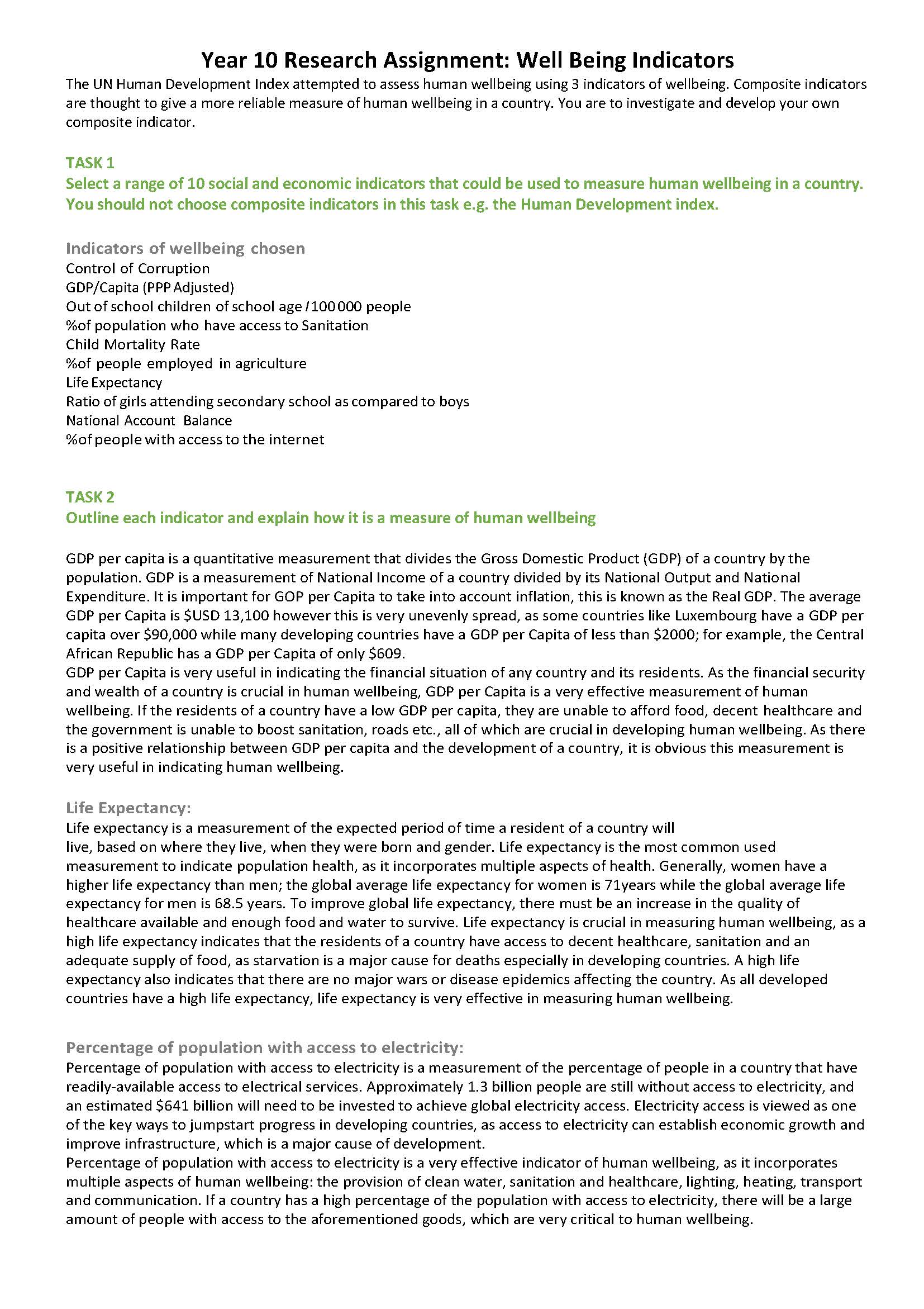 1
Annotation 1
1
Annotation 1
Identifies a variety of significant interconnections between people, places and environments 2 Annotation 2
Explains a number of different significant relationships between GDP, places and people's wellbeing 3 Annotation 3
Explains a number of different significant relationships between life expectancy and people's wellbeing 4 Annotation 4
Explains a number of different significant relationships between access to electricity and wellbeing 5 Annotation 5
Explains a range of changes that result from these interconnections and their consequences
-
Annotations
-
1
Annotation 1
Identifies a variety of significant interconnections between people, places and environments -
2
Annotation 2
Explains a number of different significant relationships between GDP, places and people's wellbeing -
3
Annotation 3
Explains a number of different significant relationships between life expectancy and people's wellbeing -
4
Annotation 4
Explains a number of different significant relationships between access to electricity and wellbeing -
5
Annotation 5
Explains a range of changes that result from these interconnections and their consequences
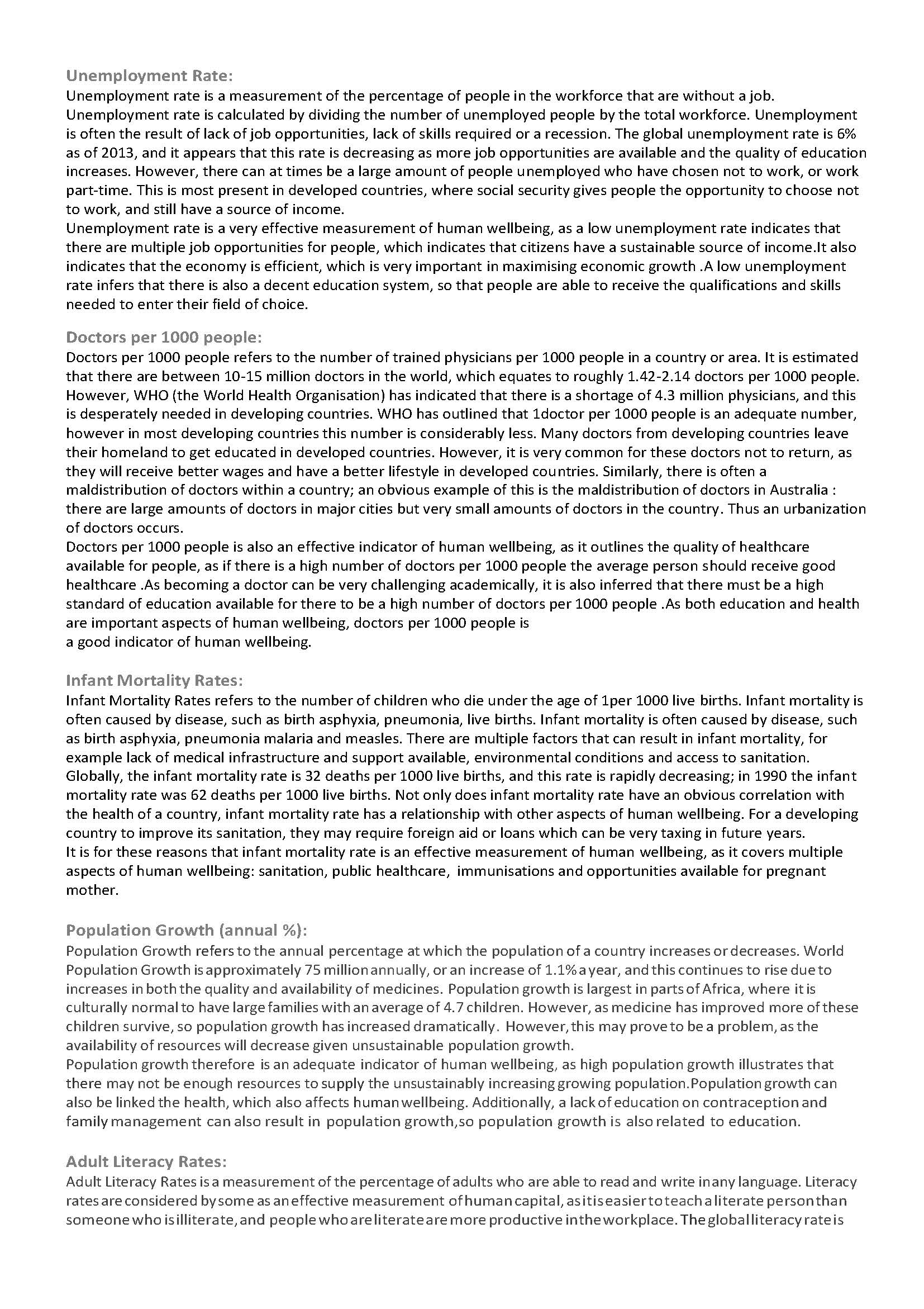 1
Annotation 1
1
Annotation 1
Explains a number of different significant relationships between unemployment and people's wellbeing 2 Annotation 2
Explains a number of different significant relationships between access to doctors and people's wellbeing 3 Annotation 3
Explains a number of different significant relationships between infant mortaliaity rates and people's wellbeing 4 Annotation 4
Explains a number of different significant relationships between population growth and people's wellbeing 5 Annotation 5
Explains a number of different significant relationships between adult literacy rates and people's wellbeing 6 Annotation 6
Explains a number of different changes that result from these interconnections and their consequences
-
Annotations
-
1
Annotation 1
Explains a number of different significant relationships between unemployment and people's wellbeing -
2
Annotation 2
Explains a number of different significant relationships between access to doctors and people's wellbeing -
3
Annotation 3
Explains a number of different significant relationships between infant mortaliaity rates and people's wellbeing -
4
Annotation 4
Explains a number of different significant relationships between population growth and people's wellbeing -
5
Annotation 5
Explains a number of different significant relationships between adult literacy rates and people's wellbeing -
6
Annotation 6
Explains a number of different changes that result from these interconnections and their consequences
 1
Annotation 1
1
Annotation 1
Explains a number of different significant relationships between murder rate and people's wellbeing 2 Annotation 2
Explains a number of different significant relationships between female employment and people's wellbeing 3 Annotation 3
Uses relevant geographical terminology 4 Annotation 4
Explains a number of different changes that result from these interconnections and their consequences
-
Annotations
-
1
Annotation 1
Explains a number of different significant relationships between murder rate and people's wellbeing -
2
Annotation 2
Explains a number of different significant relationships between female employment and people's wellbeing -
3
Annotation 3
Uses relevant geographical terminology -
4
Annotation 4
Explains a number of different changes that result from these interconnections and their consequences
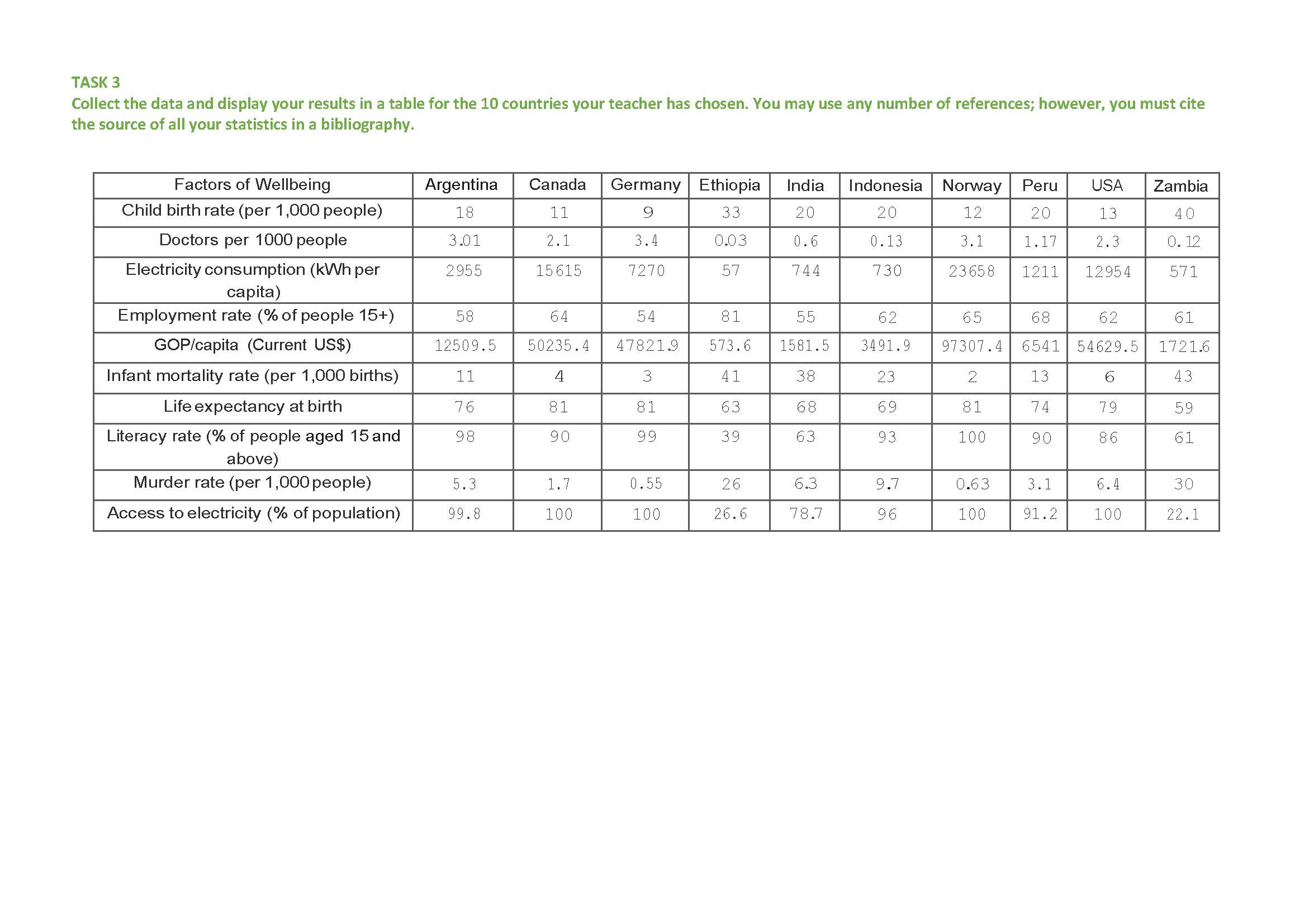 1
Annotation 1
1
Annotation 1
Records data in an appropriate format with clear units of measurement associated with each indicator
-
Annotations
-
1
Annotation 1
Records data in an appropriate format with clear units of measurement associated with each indicator
 1
Annotation 1
1
Annotation 1
Constructs a wellbeing index that effectively ranks countries
-
Annotations
-
1
Annotation 1
Constructs a wellbeing index that effectively ranks countries
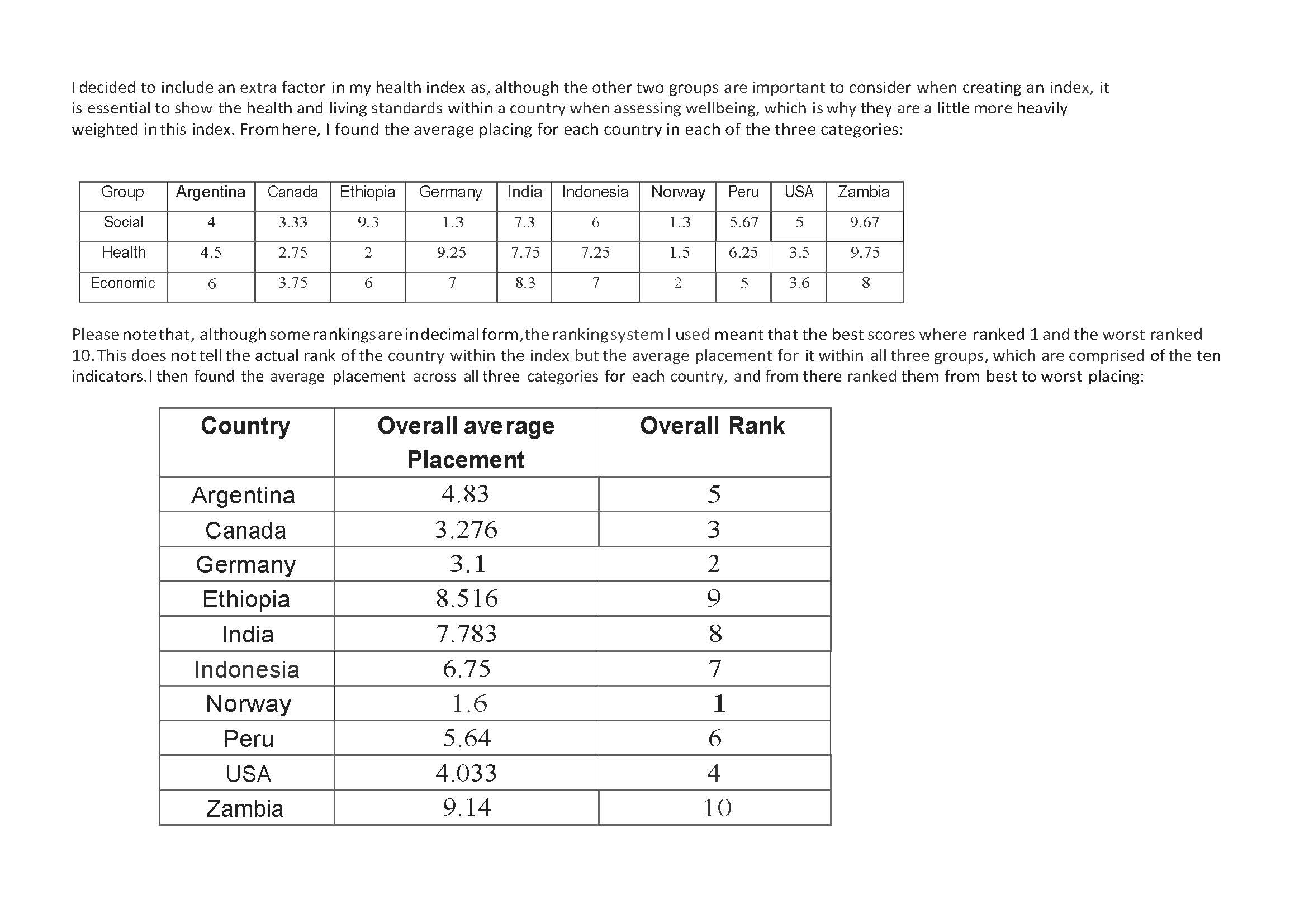 1
Annotation 1
1
Annotation 1
Specifies methods used to interpret and analyse data
-
Annotations
-
1
Annotation 1
Specifies methods used to interpret and analyse data
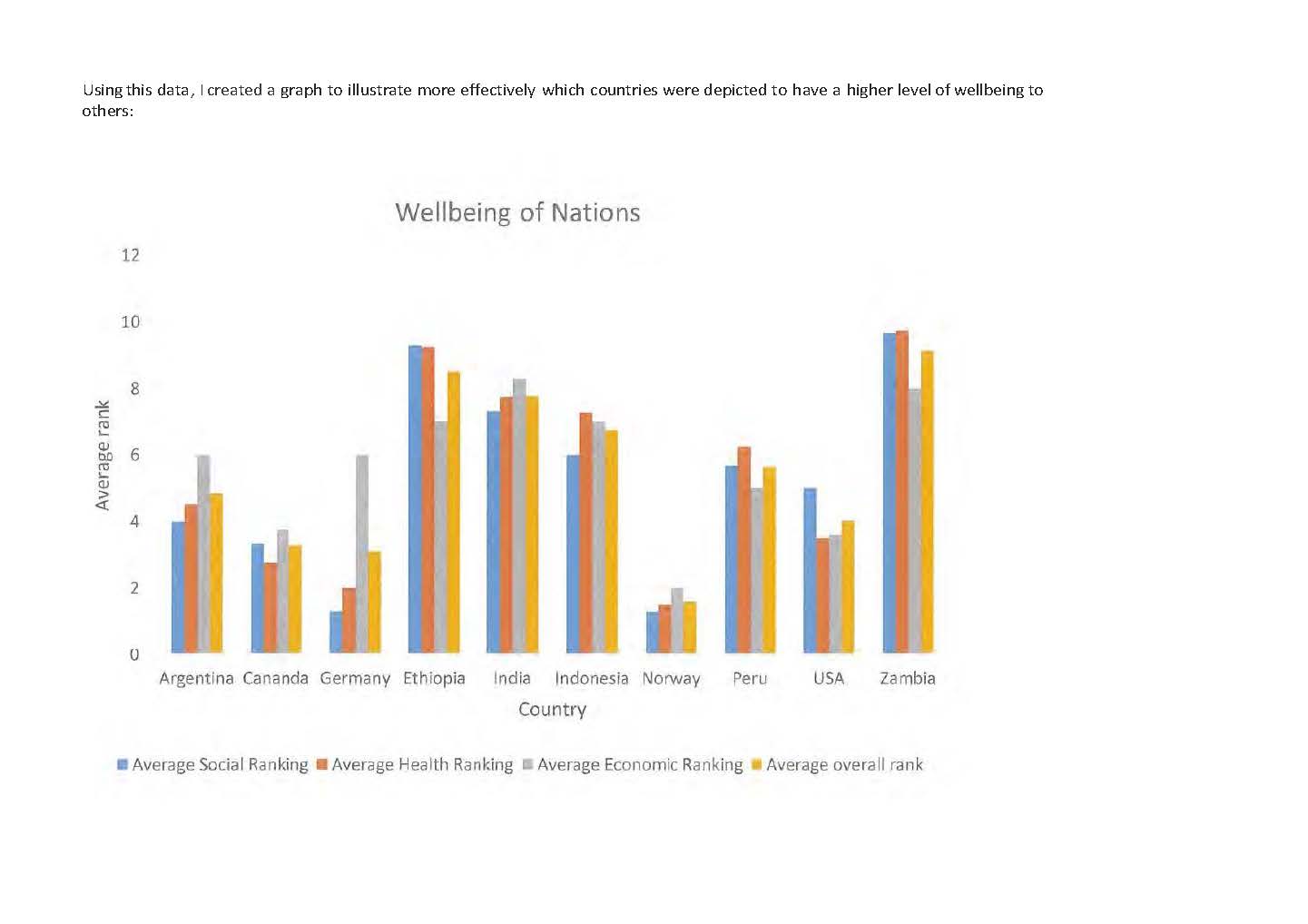 1
Annotation 1
1
Annotation 1
Analyses and synthesises data in a graphical format
-
Annotations
-
1
Annotation 1
Analyses and synthesises data in a graphical format
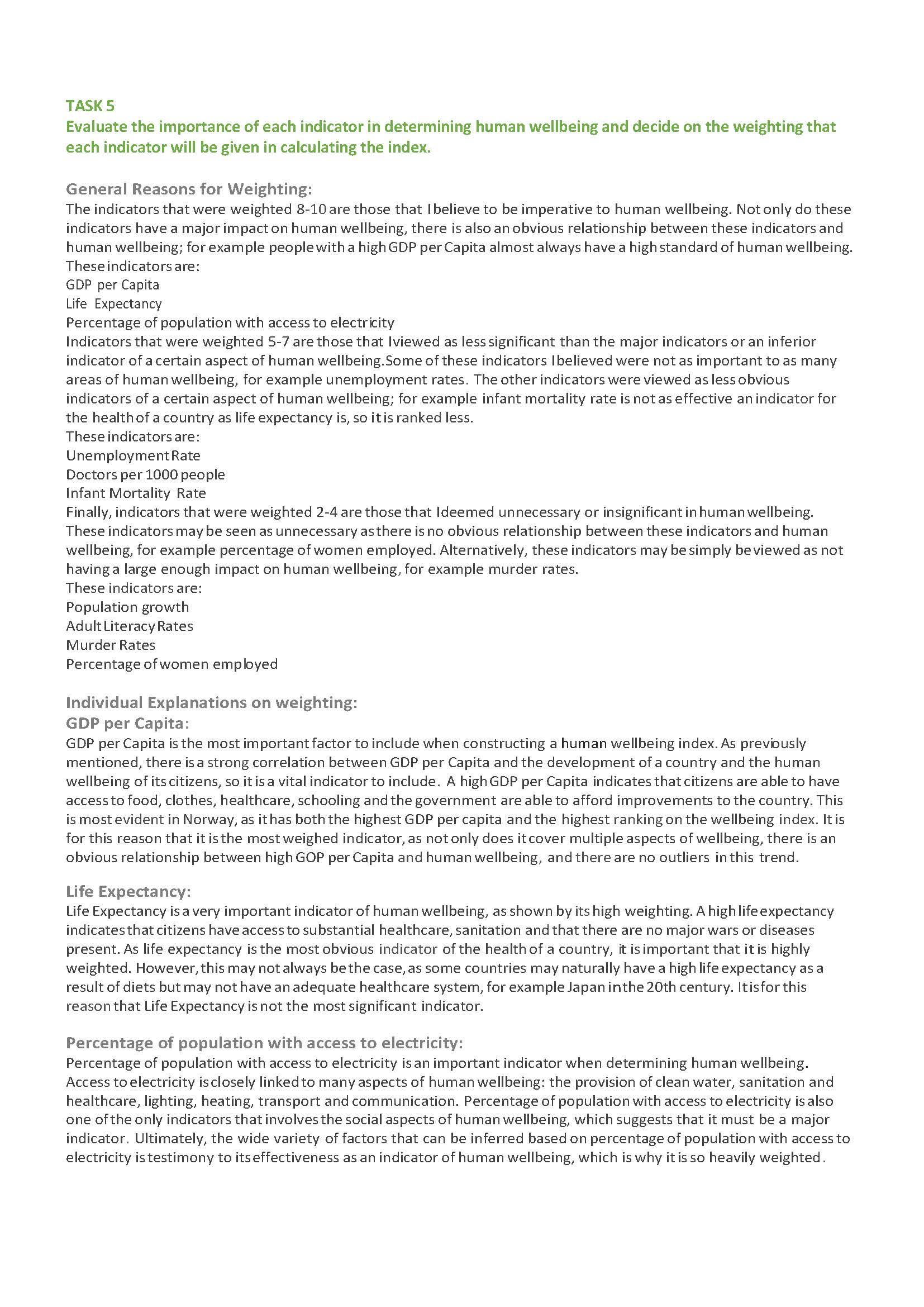 1
Annotation 1
1
Annotation 1
Clarifies information and systematically analyses the implications for the weighting of each indicator 2 Annotation 2
Provides a number of specific examples to support the judgement being presented
-
Annotations
-
1
Annotation 1
Clarifies information and systematically analyses the implications for the weighting of each indicator -
2
Annotation 2
Provides a number of specific examples to support the judgement being presented
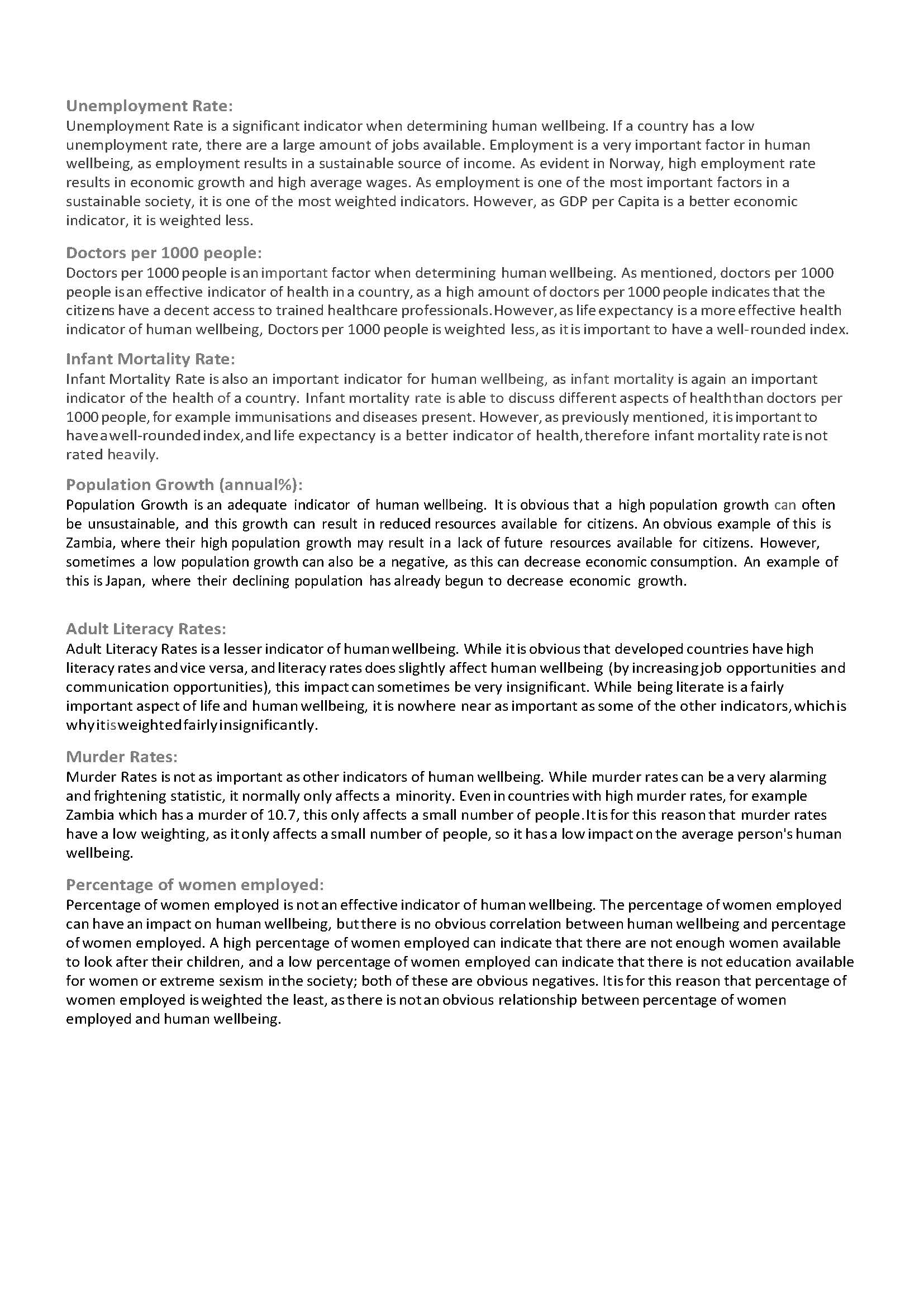 1
Annotation 1
1
Annotation 1
Clarifies information and systematically analyses the implications for the weighting of each indicator 2 Annotation 2
Uses relevant geographical terminology 3 Annotation 3
Provides a number of specific examples to support the judgements being presented
-
Annotations
-
1
Annotation 1
Clarifies information and systematically analyses the implications for the weighting of each indicator -
2
Annotation 2
Uses relevant geographical terminology -
3
Annotation 3
Provides a number of specific examples to support the judgements being presented
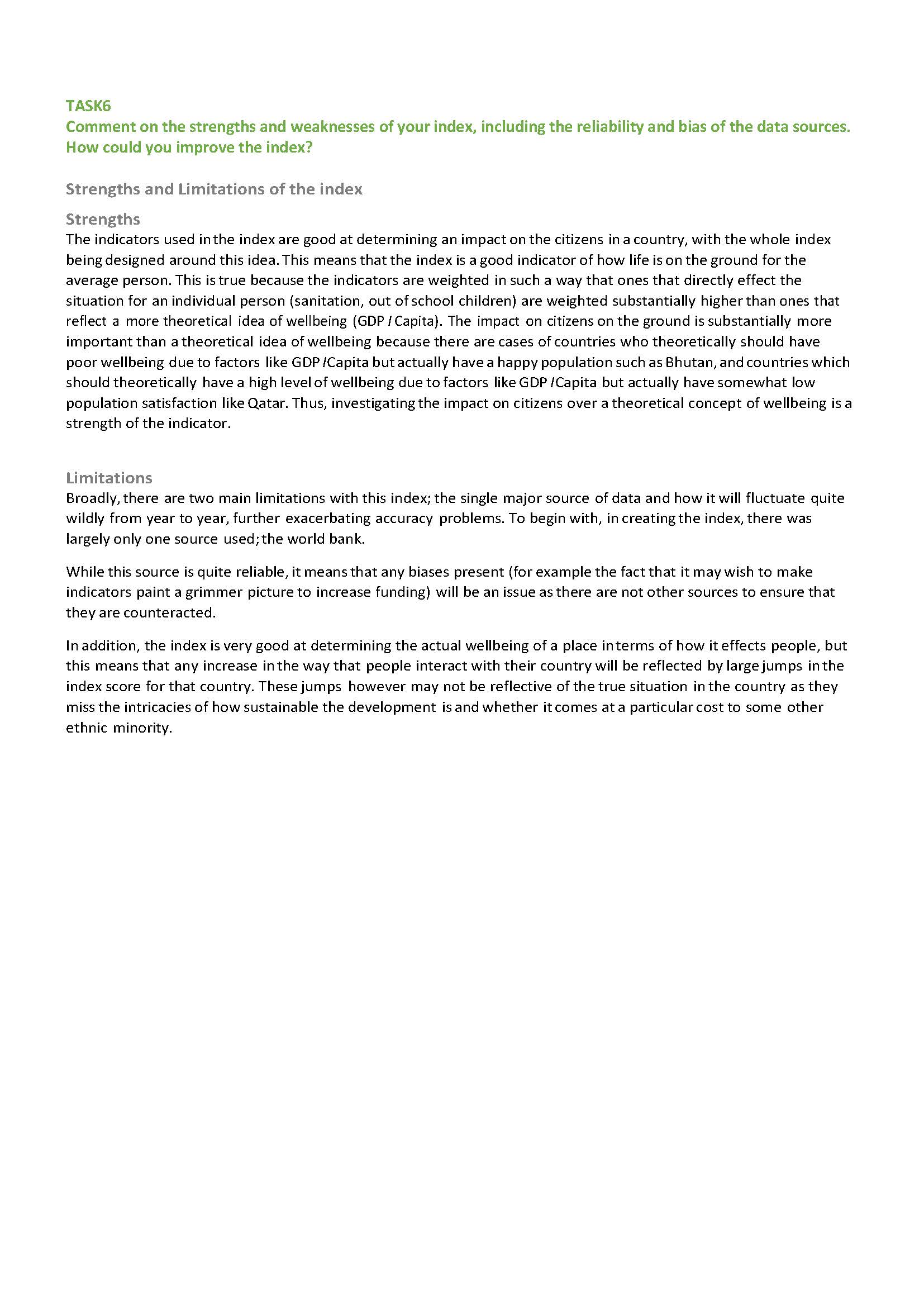 1
Annotation 1
1
Annotation 1
Makes explicit connections between the specific data sources and the effectiveness of the index 2 Annotation 2
Identifies clearly the strengths and weaknesses of the findings 3 Annotation 3
Presents at least one area for improvement and analyses the specific reasons for these changes 4 Annotation 4
Presents a reasoned analysis of the reliability of the chosen data sources
-
Annotations
-
1
Annotation 1
Makes explicit connections between the specific data sources and the effectiveness of the index -
2
Annotation 2
Identifies clearly the strengths and weaknesses of the findings -
3
Annotation 3
Presents at least one area for improvement and analyses the specific reasons for these changes -
4
Annotation 4
Presents a reasoned analysis of the reliability of the chosen data sources
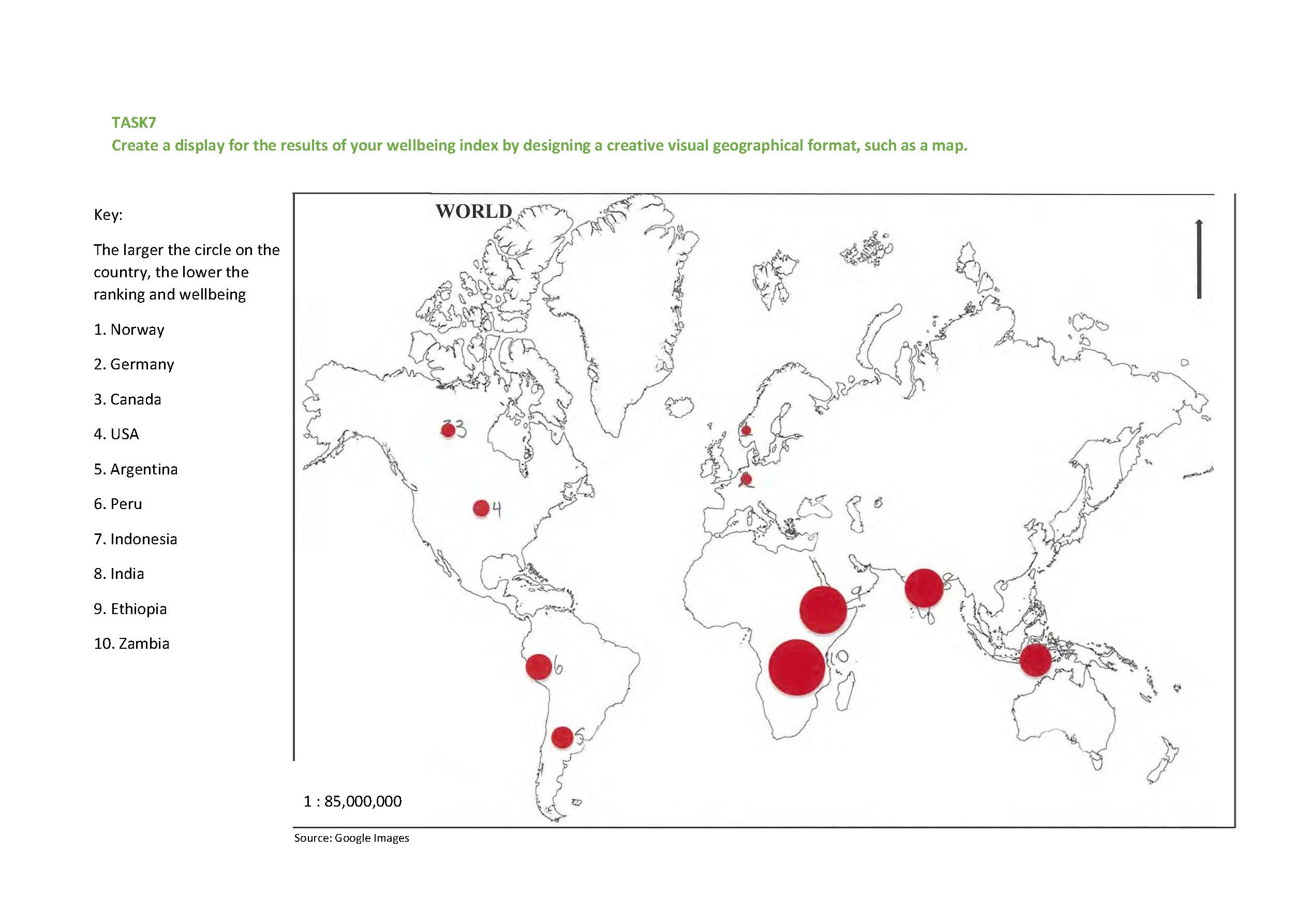 1
Annotation 1
1
Annotation 1
Uses suitable scale and cartographic conventions 2 Annotation 2
Interprets given data to create a data display map of relative wellbeing ranking 3 Annotation 3
Designs a symbolic system to represent relative rankings across countries
-
Annotations
-
1
Annotation 1
Uses suitable scale and cartographic conventions -
2
Annotation 2
Interprets given data to create a data display map of relative wellbeing ranking -
3
Annotation 3
Designs a symbolic system to represent relative rankings across countries
